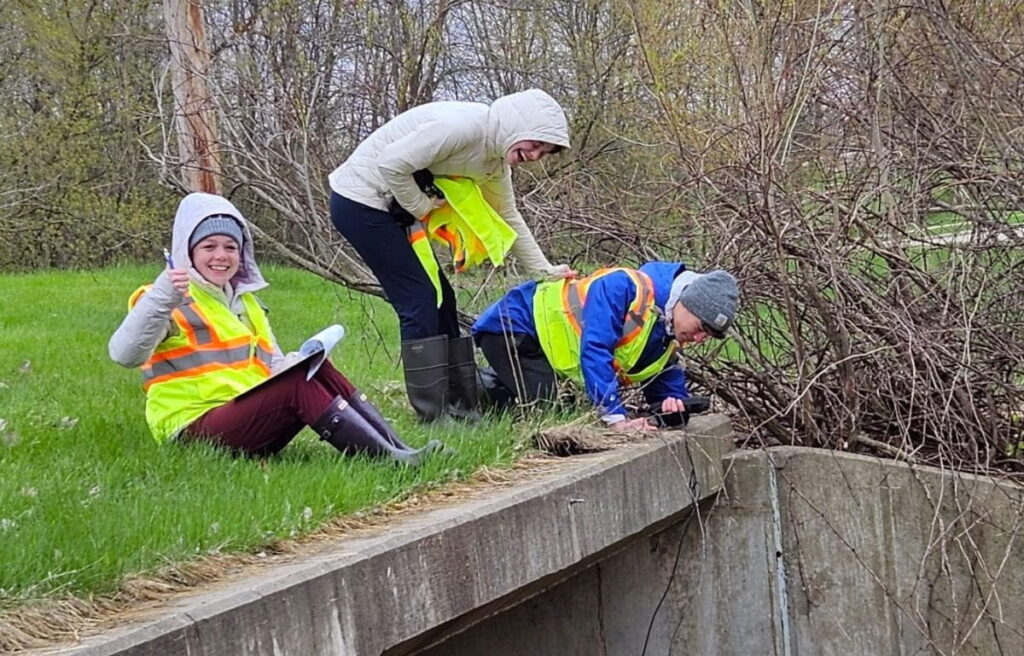
Data collected by high school students contributes to long-term monitoring of the Fox Valley watershed. (Photo courtesy of Freshwater Collaborative of Wisconsin)
When Dana Lex, a science teacher at West De Pere High School, was approached by UW-Green Bay faculty in 2006 to participate in a new water-quality monitoring program, she jumped at the opportunity to create a course that would get students outdoors.
“I’ve built my environmental science class around this project, and I feel it helps students be better parents, citizens and voters and to know that their future is connected to the health of the environment because they actually have experienced it firsthand,” she says.
UW-Green Bay’s Lower Fox River Watershed Monitoring Program has grown into a network of teachers and students from 11 area high schools and middle schools who monitor environmentally impaired streams in the Fox River watershed for water quality and ecological health.
Student teams collect data that help researchers assess long-term trends and evaluate restoration efforts throughout the watershed. It’s important work that helps measure runoff pollution flowing to the Fox River and Bay of Green Bay where it contributes to the much publicized “dead zone” in the bay.
“Being involved with the program connects students to their environment in ways you cannot replicate any other way. It’s as simple as that,” Lex says. “There are so many careers out there related to environmental health and sustainability is becoming more mainstream every year.”

Students create poster presentations and talk about their research during the Annual Watershed Symposium. (Photo courtesy of Freshwater Collaborative of Wisconsin)
Participating students present their research findings to students, teachers, UW-Green Bay faculty and staff, and community members at the Annual Watershed Symposium. The 16th annual event in spring 2023 was funded by a grant from the Freshwater Collaborative of Wisconsin and involved about 10 teachers, 65 students and 15 college and community professionals.
During the symposiums, participants exchange ideas; share research findings through panel discussions, posters and presentations; compare data from their streams; and interact with researchers in water-quality fields. This year they also heard form Anna Qualls, who will graduate from De Pere High School in May 2023. Qualls was the first high school intern to participate in UW-Green-Bay’s Freshwater Summer Scholars Internship Program, which is also supported by the Freshwater Collaborative. (Read about her experience).
“The symposium is a great place to share data and see how our watershed is connected. You get a sense that with enough data and enough voices, we can and will make a difference improving our water resources,” says Mark Valentine, a science teacher at Aldo Leopold Community School in Green Bay.
Valentine joined the program and UW-Green Bay’s Wild Rice in the Classroom program as a first-year teacher two years ago, and 2023 was the first time his eighth-grade students presented their findings from monitoring the Fox River.
“The program provides great hands-on learning opportunities for our students and helps them understand the impacts we have on the water quality here locally,” he says. “It is a wonderful opportunity to get out of the classroom and know that the data we are collecting can have a positive impact.”
Originally posted by Freshwater Collaborative of Wisconsin and UW-Green Bay
